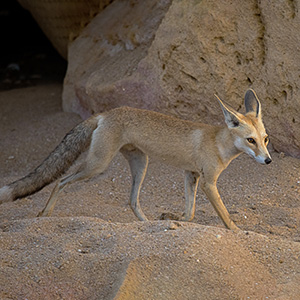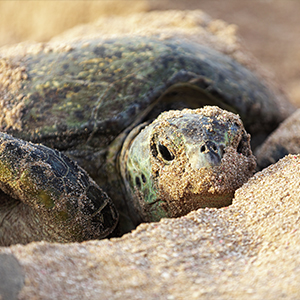- Retail Banking
- Accounts and deposits
- Loans
- Insurances
- Cards
- Global transfers & Non Resident Banking
- Sohar rewards
- Digital banking
- Global Market
Reaffirming its commitment towards endorsing the Sultanate’s socio-economic activities, Sohar International has sponsored a documentary series that seeks to uncover the Sultanate’s diversified Wildlife, thereby boosting tourism and conservation activities in the country in line with Oman Vison 2040.
The epic exploration project initiated by Oman in Focus under the title “Not Discovered Yet” will cover 12 landmark tourist destinations and encompasses a one-hour documentary – ‘The Shoreline of Oman’ and a Blue Chip – Two-part documentary series called ‘Wild Oman’, that will capture the essence of Oman’s beaches, rare land and marine wildlife, carrying the audience on an extraordinary exploration of all corners of our fascinating country, from the top of the desolate escarpment to the bottom of some of world’s richest seas.
This sponsorship reflects Sohar International’s goal of becoming an Omani service institution implementing global best practices not just in its service operations, but also in the work that they do for the community and its people.

While best known for their ability to change colour, Chameleons are also known for their distinctive eyes. They camouflage by altering pigments and spaces between crystals in the different layers of their skin. Chameleons can found in Masirah Island
Their incredible eyes can not only move independently, granting the chameleon a 360-degree field of vision, but can also zoom in on a target. This makes them exceptionally adept at hunting their prey – insects.
Photo credit: Ivan Rademeyer

The Arabian Oryx is the national animal of Oman and is abundantly found in Al Wusta Governorate
The Arabian Oryx is one of the best conservation success stories in the region. Although listed as "extinct in the wild” In the early 1970's, conservations efforts by various Arab states – including Oman – managed to save these incredible creatures.
Once their numbers were strong enough, these easily recognisable antelopes were re-introduced into the wild sometime in the early 1980’s. Their numbers have since continued to grow steadily.
Photo credit: Ivan Rademeyer and Anel Rademeyer

A common coastal bird in the region, the Sooty Gull can be found throughout the Gulf of Oman, Persian Gulf, Red Sea, and the surrounding areas.
Sooty Gulls are both predators and scavengers, feeding on both small fish that have washed ashore or those that they catch themselves. They will even feed on newly hatched turtles if the opportunity arises.
Photo credit: Stef Muller

Ghost Crabs are semi terrestrial creatures; spending most of their time on land and occasionally going into the surf to wet their gills.
They spend the warmest parts of the day underground in burrows close to the shore, some of which can be up to 1.2 meters long. They are also incredibly skittish, immediately running to their burrows or into the sea whenever they feel threatened.
They are found on most beaches in Oman, Ghost crabs get their name for their light colouration and nocturnal nature
Photo credit: Oman In Focus

Oman is home to various endangered species including the Egyptian vulture which is sometimes called the “Pharoah’s chicken”
Egyptian Vultures are listed as “endangered” by the IUCN. Although these birds don’t have many predators, their numbers have declined due to power line collisions & lead-poisoning.
Photo credit: IvanIvan Rademeyer

Oman is home to the most prominent nesting grounds for turtles, these include Daymaniyat, Masirah, Ras Al Jinz, Ras Al Had, and various areas in the Dhofar region.
One of the more surprising facts about turtles is that the gender of hatchlings is determined by the temperature of their nest. In cooler temperatures, a clutch will produce more males. Conversely, more females tend to emerge from warmer nests.
Photo credit: Anel Rademeyer

There are over 15 different species of Moray Eels that live in Oman waters, including the popular Dragon Moray and Zebra Moray.
They are carnivorous ambush predators that rely on their highly developed sense of smell to detect their prey, which primarily comprises of smaller fish and crabs.
They are usually found in and around coral and rocky reefs, such as those around the Dimaniyat Islands.
Photo credit: Maisa Al Hooti

The seas off the coast of Dhofar and the Damaniayat islands are home to several of the 120 globally known the species of cuttlefish
The Cuttlefish are a Cephalopod, a class of marine creatures that also includes squid, octopuses, and nautiluses.
Photo credit: Maisa Al Hooti

Oman’s abundant sea life is one to truly admire and conserve. There are more than 20 dolphin species living off the coast of Dhofar and this specific one is known as ‘Delphinus Capensis’.
Living in large groups and accustomed to the warms waters of the region, you can witness these beautiful creatures between the months of October and May.
Photo credit: Gianna Minton

The Arabian Red Fox found in Dhofar and Hajar mountains of Oman, can be distinguished from their Red Fox cousins by their larger ears and smaller bodies.

The Green Sea Turtle gets its name from the colour of the fat and connective tissue under the carapace. They can be found in tropical and subtropical waters around the world.
During nesting season, females of the species may lay clutches of between 100 to 200 eggs at a time and may even nest up to five times. Sadly, less than 1% of hatchlings survive to maturity.

As a sub-species of humpback whales, the Arabian Sea Humpback Whale feed and breed in the same place within the waters of Oman never migrating as Oman’s coasts are considered fertile feeding grounds
Sadly, with just an estimated 100 whales left, the Arabian Sea Humpback Whale is at high risk of extinction.
Credit: Oman In Focus